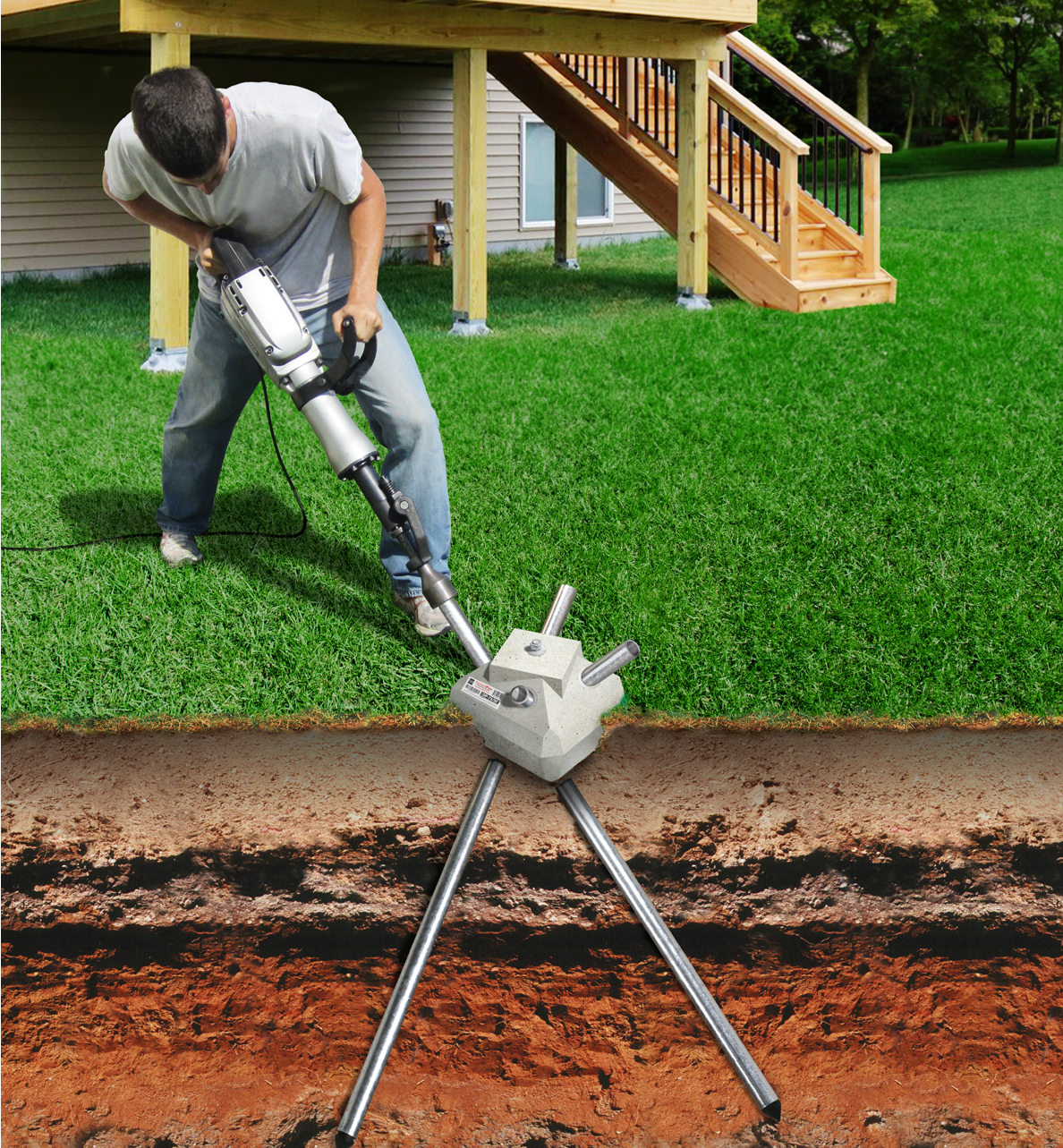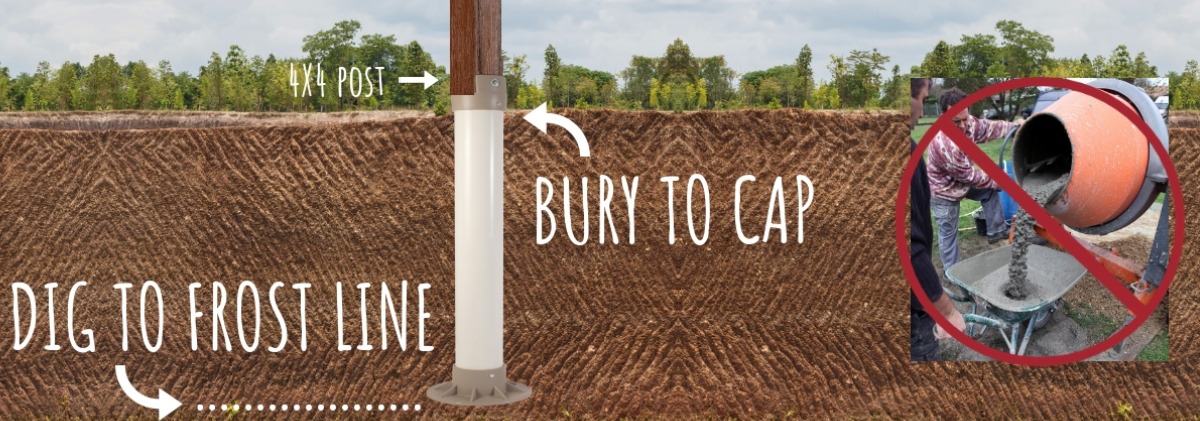Structure from the Ground Up: The Ultimate Overview to Creating and Installing Deck Footings
Make Sure Security and Durability With Correctly Installed Deck Grounds
Deck footings may not be the most extravagant element of deck construction, yet they play a vital role in making certain stability and durability. In this discussion, we will explore the importance of proper deck footings, aspects to take into consideration throughout setup, different types of grounds readily available, step-by-step installment guide, and upkeep ideas for guaranteeing resilient footings.

Value of Proper Deck Grounds
Why are effectively mounted deck grounds essential for the stability and durability of your deck? The solution exists in the fundamental duty that deck footings play in sustaining the weight of the entire framework. Deck footings are the structure on which the deck relaxes, transferring the tons from the deck to the ground. When grounds are not effectively set up, it can cause a series of problems that endanger the security and long life of the deck.
To start with, correctly set up deck grounds distribute the weight of the deck uniformly, protecting against any irregular settling or sinking. This is especially important in areas with unstable dirt, as it assists to alleviate the danger of the deck changing or falling down. Additionally, well-installed footings ensure that the deck remains level, avoiding any type of structural damage that can occur when a deck becomes irregular.
Second of all, appropriately mounted footings give a strong anchor for the deck, preventing extreme movement and persuade. This helps to preserve the architectural integrity of the deck, decreasing the threat of injuries or accidents. It also reduces the wear and tear on the deck, enabling it to stand up to the aspects and regular use for a longer amount of time.
Factors to Think About for Deck Footing Setup
When mounting deck footings, there are a number of essential factors to consider for proper installation. Various soil types have different load-bearing capacities, so it is important to conduct a dirt test to make sure the footings can support the weight of the deck and its residents. By taking right into account these variables, you can guarantee the correct installment of deck grounds and appreciate a lasting and stable deck.
Sorts Of Deck Footings to Select From
There are a number of different sorts of deck grounds available for you to select from. Each type has its own benefits and drawbacks, so it's necessary to consider your details needs and the conditions of your deck before deciding.
One typical kind of deck ground is the concrete ground. This involves excavating holes in the ground and pouring concrete into them to create a solid foundation. Concrete footings are resilient and give exceptional security, making them ideal for decks in locations with difficult dirt problems or high wind loads.
Another choice is the helical pier footing, which consists of a steel shaft with helical plates that are screwed into the ground. These footings fast to mount and can be made use of in different soil types, consisting of sandy or clay dirts. They are also flexible, enabling easy leveling of the deck.
Sonotube grounds are another prominent choice. These footings are created by putting a cardboard tube in a hole and loading it with concrete. Sonotube grounds are reasonably easy to install and give appropriate stability for smaller sized decks or in areas with less demanding dirt conditions.

When selecting the kind of deck footing, it's essential to take into consideration variables such as soil problems, deck size and weight, local building codes, and personal choices. By selecting the appropriate ground type, you can guarantee the security and long life of your deck.
Step-by-Step Overview for Setting Up Deck Footings

Determine the place: Begin by noting the precise setting of check here each footing making use of risks and string (Deck Footings). Take into consideration any type of neighborhood building codes or guidelines pertaining to setback Full Article distances
Dig the openings: Make use of an article hole digger or an auger to dig the holes for the grounds. The depth will certainly depend upon the frost line in your area and the kind of dirt. Generally, a deepness of at the very least 36 inches is suggested for security.
Degree the openings: Make sure that all-time lows of the holes are level (Deck Footings). This can be attained by using a degree or a straight board throughout the top of the holes
Add gravel: Place a layer of crushed rock at the end of each opening to improve drain and prevent the footing from penetrating the dirt gradually.
Insert the ground forms: Place the ground forms right into the openings, ensuring they are focused and level. Use stakes to safeguard them in area.
Mix and pour concrete: Follow the guidelines on the concrete mix bag to prepare the concrete. Put the concrete right into the footing forms, loading them totally.
Smooth the surface: Make use of a trowel to smooth the surface of the concrete and get rid of any type of air pockets. Enable the concrete to cure according to the manufacturer's instructions.
Upkeep Tips for Durable Deck Grounds
Correct upkeep is important for making sure the long life and security of deck grounds. By consistently examining and preserving your deck footings, you can protect against damages and possible security hazards.
Regular cleaning is additionally crucial for keeping deck grounds. Dirt, particles, and plant life can build up around the footings, which can cause moisture build-up and degeneration. Cleaning the grounds frequently, utilizing a brush or a pressure washer, can assist prevent these concerns and prolong the life expectancy of your deck.
In enhancement to cleansing, it is very important to keep the area around Full Article the grounds clear of any type of blockages. Prevent stacking products against the grounds or allowing plants to grow also near to them. These obstructions can catch dampness and trigger the footings to wear away in time.
Lastly, normal resealing of the footings is recommended to shield them from wetness and other ecological elements. Using a water-proof sealant can assist protect against water damage and extend the life-span of the grounds.
Final Thought
In final thought, appropriate installment of deck footings is essential for ensuring security and long life of your deck. Variables such as soil type, lots ability, and regional building regulations need to be considered when picking the right type of deck grounds. Following a step-by-step guide for setup and regular upkeep will certainly assist to ensure the grounds continue to be long-lasting and resilient.
In this conversation, we will check out the significance of proper deck grounds, aspects to consider throughout installment, different types of footings available, step-by-step installment guide, and upkeep tips for guaranteeing durable footings. Deck footings are the foundation on which the deck relaxes, moving the lots from the deck to the ground.One usual type of deck ground is the concrete ground. Put the footing kinds: Insert the footing develops right into the holes, ensuring they are centered and level.In conclusion, proper setup of deck footings is vital for guaranteeing stability and durability of your deck.